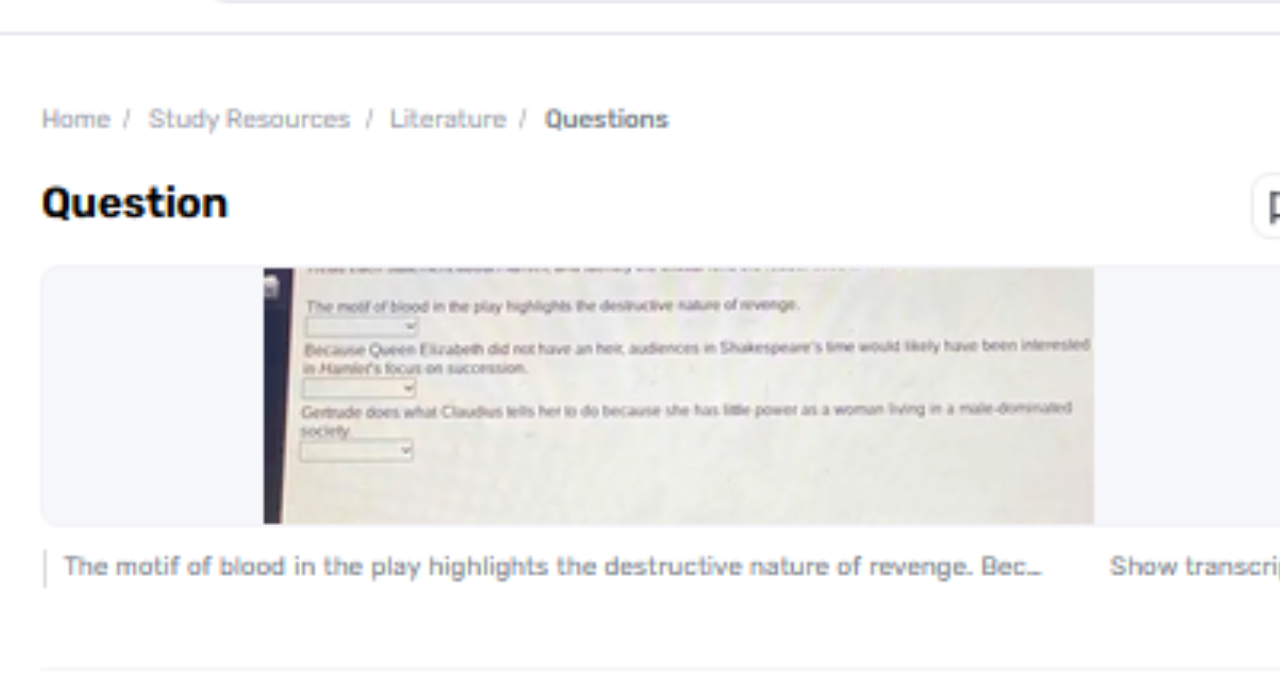In writing, themes regularly serve as typical components that upgrade the thematic profundity of a story. the motif of blood in the play highlights the destructive nature of revenge. especially in catastrophe and dramatization, as often as possible means not as it were life and essentialness but also violence, blame, and the repercussions of vindication. Within the play, the theme of blood is unpredictably tied to the topic of exact retribution, underscoring its dangerous impacts on individuals and their environment. This investigation uncovers how the play employments blood to demonstrate the patterned and self-perpetuating nature of retaliation, eventually driving to demolish.
The Dangerous Nature of Vindicate Through the Theme of Blood
The theme of blood within the play distinctively underscores the dangerous nature of exact retribution. Blood symbolizes not as it were physical viciousness but too the blame and cyclical violence that follow from looking for reprisal, eventually driving to significant ethical and enthusiastic demolition.
Imagery of Blood
Within the play, blood capacities as a strong image that speaks to more than fair physical hurt. It encapsulates the ethical and passionate results of vindication. Blood is frequently related with the infringement of characteristic arrange and the disturbance of societal standards. When characters look for retribution, the symbolism of blood becomes a repeating theme, highlighting their plummet into savagery and chaos. This imagery proposes that vindication isn't simply an act of reprisal but a constraint that stains and adulterates all it touches.
Blood and Blame
As the journey for exact retribution escalates, the theme of blood gets to be an image of blame and regret. Characters who lock in acts of retribution are regularly frequented by the slaughter they have caused, which shows both truly and metaphorically. For occasion, scenes where blood is distinctively delineated frequently coincide with characters' extending sense of blame and the mental torment that takes after their activities.
The tireless symbolism of blood reflects the unpreventable nature of blame and the inside struggle confronted by those who seek exact retribution. This association between blood and blame emphasizes how retaliation not as it were hurts others but annihilates the avenger's peace of mind and sense of profound quality.
The Cycle of Viciousness
The theme of blood too highlights the patterned nature of savagery that vindicate propagates. Slaughter within the play regularly leads to assisted slaughter, making a cycle that appears inconceivable to break. Each act of vindication triggers a modern wave of viciousness, illustrating how the craving for revenge can wind out of control. This tenacious cycle is symbolized through the nonstop appearance of blood, which marks each ensuing act of viciousness and fortifies the thought that vindication creates more suffering and chaos.
Utilizing Gauth for Homework: Three Fundamental Steps
1. Identify the Errand Begin
By clearly characterizing the homework task or address. Give Gauth with particular subtle elements approximately what you wish to offer assistance with, such as the subject, sort of task (e.g., paper, problem-solving), and any specific necessities or rules.
2. Provide Setting and Data Share
Pertinent data or settings with Gauth to assist create exact and valuable reactions. This might incorporate foundation information, key concepts, or any sources you've as of now counseled. The more data you provide, the way better GPT can tailor its reactions to your needs.
3. Review and Refine
After getting the Gauth reaction, survey it carefully for exactness and significance. Make sure it meets your assignment's requirements and adjusts together with your understanding of the subject. Refine and alter the substance as needed to guarantee it reflects your voice and experiences.

Conclusion
The theme of blood within the play serves as a capable image that complements the dangerous impacts of exact retribution. Through its affiliation with blame, the cycle of savagery, and the general annihilation created by retribution, blood becomes a central component that reflects the play's topical concerns. The repeating symbolism of blood emphasizes how vindication, instead of conveying equity or determination, propagates a cycle of enduring and devastation. The play eventually illustrates that the interest in retribution leads to significant ethical and passionate results, highlighting the damaging nature of such driving forces and their far-reaching effect on all included.


